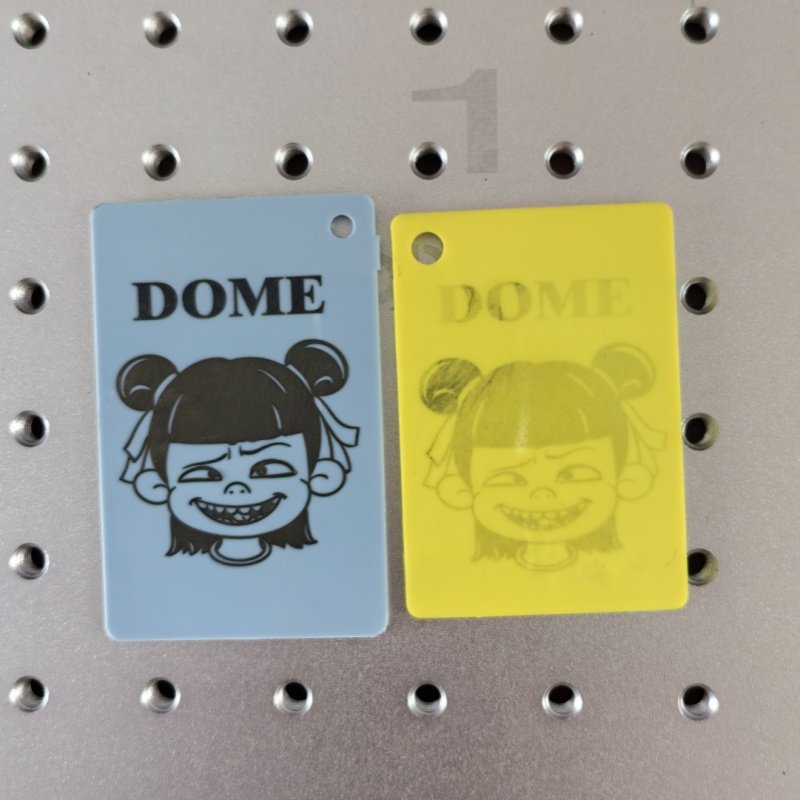In today’s competitive manufacturing landscape, permanent, high-quality marking is critical for branding, traceability, and compliance. Laser marking has emerged as a gold standard for plastic part identification, but not all plastics respond uniformly to laser technology. This is where laser marking additives (laser-sensitive or lase-activated additives) play a transformative role. This blog will explore why these additives are indispensable, their technical advantages, and how they empower industries to achieve flawless plastic laser marking while meeting strict regulatory standards.

The Challenge of Plastic Laser Marking
Plastics vary widely in composition, and many, such as TPU, PP, and certain engineered polymers, lack the natural absorption properties required for effective laser marking. Without enhancement, lasers may fail to produce visible marks, damage material integrity, or require excessive energy, leading to inefficiencies.
This is where laser marking additives step in. These specialized compounds are engineered to improve laser interaction with plastics, enabling precise, durable, and high-contrast markings without compromising material performance. Let’s dive into the key reasons why manufacturers rely on them.

1. Achieve Superior Marking Quality and Contrast
Not all plastics absorb laser energy equally. Additives act as light-absorbing agents, ensuring consistent interaction between the laser beam and the material. This results in:
- High-contrast marks: Even on dark or translucent plastics, additives create sharp, legible codes, logos, or barcodes.
- Crisp details: Fine features like serial numbers or intricate graphics remain sharp, even under magnification.
- Permanent finishes: Unlike ink-based methods, laser marks won’t smudge, peel, or fade.
For example, automotive parts made from polypropylene (PP) often require additives to produce visible VIN numbers or safety certifications.

2. Expand Material Compatibility
Laser marking traditionally works best on materials like metals or certain engineered plastics. However, laser-sensitive additives broaden compatibility to include challenging polymers, such as:
- TPU (thermoplastic polyurethane): Common in flexible components, TPU requires additives for legible marks.
- PP (polypropylene): Widely used in packaging and automotive parts, PP gains markability with additives.
- PEEK and PA12: High-performance engineering plastics benefit from enhanced contrast and speed.
By integrating additives, manufacturers avoid costly material substitutions and retain design flexibility.

3. Boost Process Efficiency and Reduce Costs
Time and energy savings are major drivers for adopting laser-activated additives:
- Lower laser power requirements: Additives amplify laser absorption, enabling faster marking with reduced energy consumption.
- Shorter exposure times: High-speed production lines achieve throughput targets without compromising quality.
- Reduced maintenance: Consistent marking minimizes rework and downtime.
For instance, electronics manufacturers using laser-marked circuit board housings save hours weekly by eliminating post-printing inspections.

4. Durability for Harsh Environments
Marks must withstand abrasion, chemicals, UV exposure, and extreme temperatures. Laser-marked additives create permanent bonds within the polymer matrix, ensuring resistance to:
- Mechanical wear: Ideal for automotive parts exposed to vibrations.
- Chemical exposure: Critical for medical devices sterilized in harsh solutions.
- Environmental factors: Perfect for outdoor signage or aerospace components.

5. Compliance and Regulatory Readiness
Industries like healthcare, automotive, and aerospace mandate traceability to meet regulations (e.g., FDA, ISO, IATF). Laser marking additives enable:
- Unique device identifiers (UDIs) for medical equipment.
- VINs and batch codes for automotive parts.
- Anti-counterfeit features are through serialized data or holographic effects.
By ensuring marks remain intact over time, additives help companies avoid costly recalls or legal penalties.

6. Design Freedom and Customization
Modern consumers demand personalized products. Laser-sensitive additives empower brands to:
- Laser-engrave variable data (e.g., names, dates) during production.
- Create intricate logos or barcodes on curved surfaces.
- Implement on-demand marking without specialized tooling.
For example, consumer goods brands use additives to personalize packaging with QR codes linking to product stories.

Choosing the Right Laser Marking Additives
Selecting the right additive requires careful consideration:
- Material compatibility: Ensure the additive aligns with your polymer base (e.g., PE, PET, PC).
- Laser type: Additives are optimized for CO2, fiber, or UV lasers.
- Aesthetic goals: Adjust hue (black, white, transparent) based on design needs.
DOME Materials specializes in tailor-made laser marking additives that balance performance with material integrity. Their solutions are tested for compatibility, ensuring no warping, discoloration, or weakening of the host plastic.

DOME Materials: Your Partner in Precision Laser Marking
At DOME Materials, we understand the complexities of industrial laser marking. Our laser-sensitive additives are engineered to deliver unmatched contrast, speed, and durability across diverse applications. Whether you’re marking automotive components, medical devices, or consumer electronics, we provide:
- Custom-formulated additives for niche polymers.
- Technical support to optimize laser parameters.
- Scalable solutions for high-volume production.
Why choose DOME Materials?
- 98% customer satisfaction rate.
- ISO-certified quality assurance.
- Global reach with rapid turnaround.
The Future of Plastic Laser Marking
As industries prioritize sustainability and traceability, laser marking additives will remain a cornerstone of smart manufacturing. By integrating these additives, companies achieve a competitive edge through efficiency, compliance, and brand reliability.
Ready to elevate your laser marking process?
Contact DOME Materials today to discover how our additives can transform your production line. Let’s create marks that last—literally.





